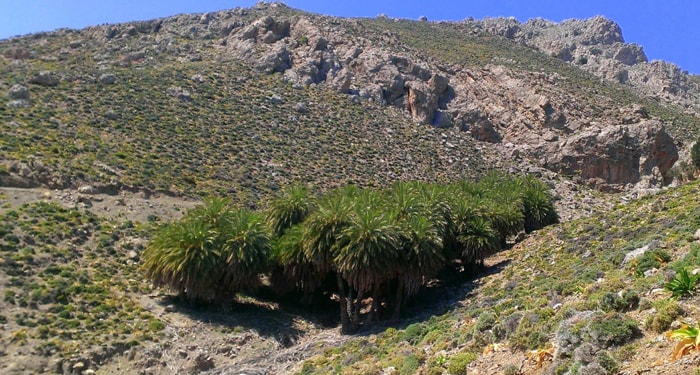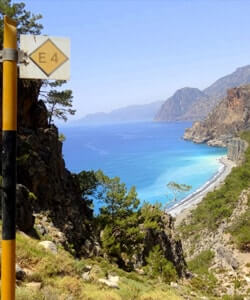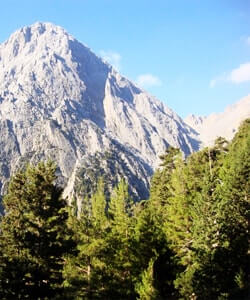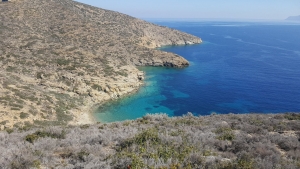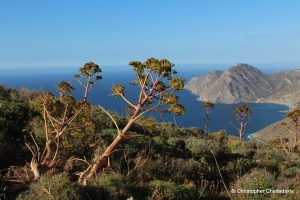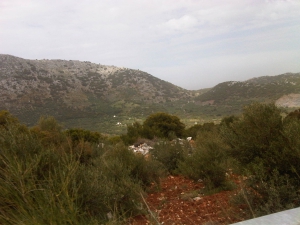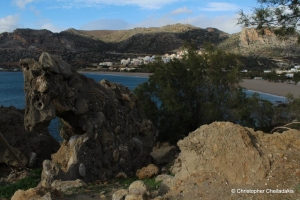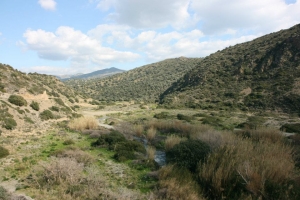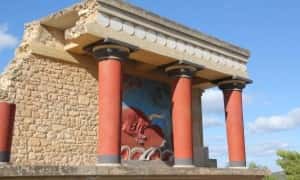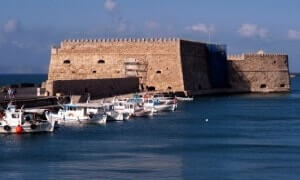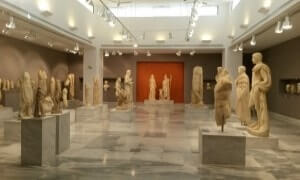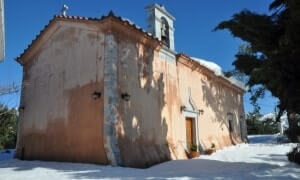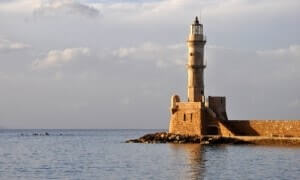Vourdolakos or Chlia is a remote beautiful beach with coarse gray sand formed behind the rock of Psaroharako and stretching west to Sidonia. Actually, Vourdolakos consists of several consecutive bays, separated by short rocky parts, where one could snorkel.
On the island there are several small beaches, the largest of which is located north of the site is sandy. Just below the ancient settlement (to the south) there is a small bay with two small beautiful pebble beaches. All beaches of Pseira are located on the south side of the island thus they are protected from ordinary north winds.
Artikas or the giant fennel (Ferula communis) has a prominent place in Greek mythology as this plant was used by Prometheus to bring people the fire from the gods. The reason is that the interior thick trunk of artikas consists of a soft foam-like flammable material and its burning lasts, making it a natural torch.
Drasi is a small plateau by Neapolis that is crossed by the road connecting Neapolis to the Lassithi Plateau.
At the small and almost deserted village Chordaki, district of Amari, we meet the small but very beautiful canyon of Kynigospilios south of the village. It is a secret place, not visible from anywhere and this is the main reason that remains it unknown. The canyon Kynigospilios has enough water flow during the winter months till the end of spring, which comes from the slopes of Mount Kedros.
At the end of the long beach or a Pahia Ammos, at the west side of Paleochora, there is the Horse of Paleochora. This is not an animal but a very large and impressive rock of conglomerate limestone that reminds of a horse head. With a little imagination one can see the face and the eyes of the horse watching the long sandy beach that stretches in front of it.
At the north coast of Heraklion, between the beaches of Agia Pelagia and Fodele rises the steep low range of Bobias (max altitude is 423 meters). This area actually belongs to the small range of Kouloukonas. Despite its low altitude, it is a really wild place with slopes in the west and north side that raises sharply above sea.
Akoumianos river is the third larger river (in water quantity) in the province of Agios Vasilios (after Megas and Platys River). It gets its water from dozens of sources from the slopes of the mountains Kedros and Asiderotas and has water all year round, especially in its upper part.





